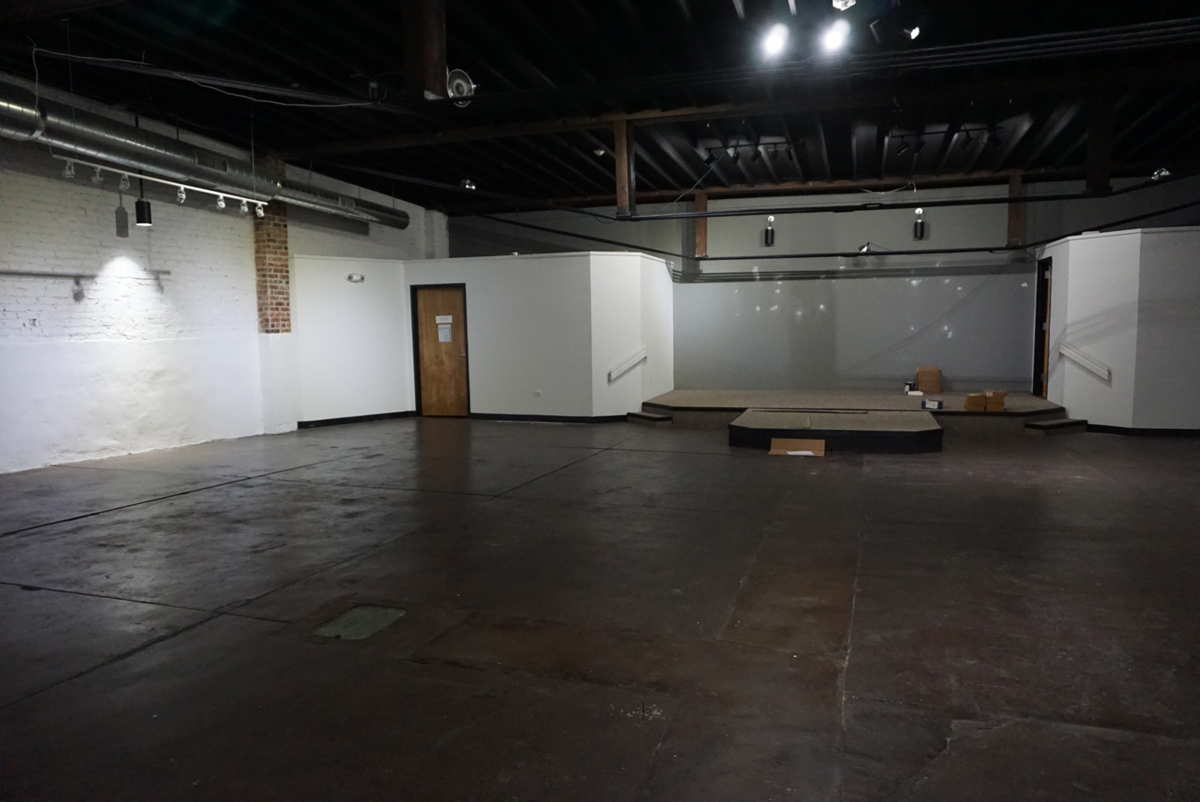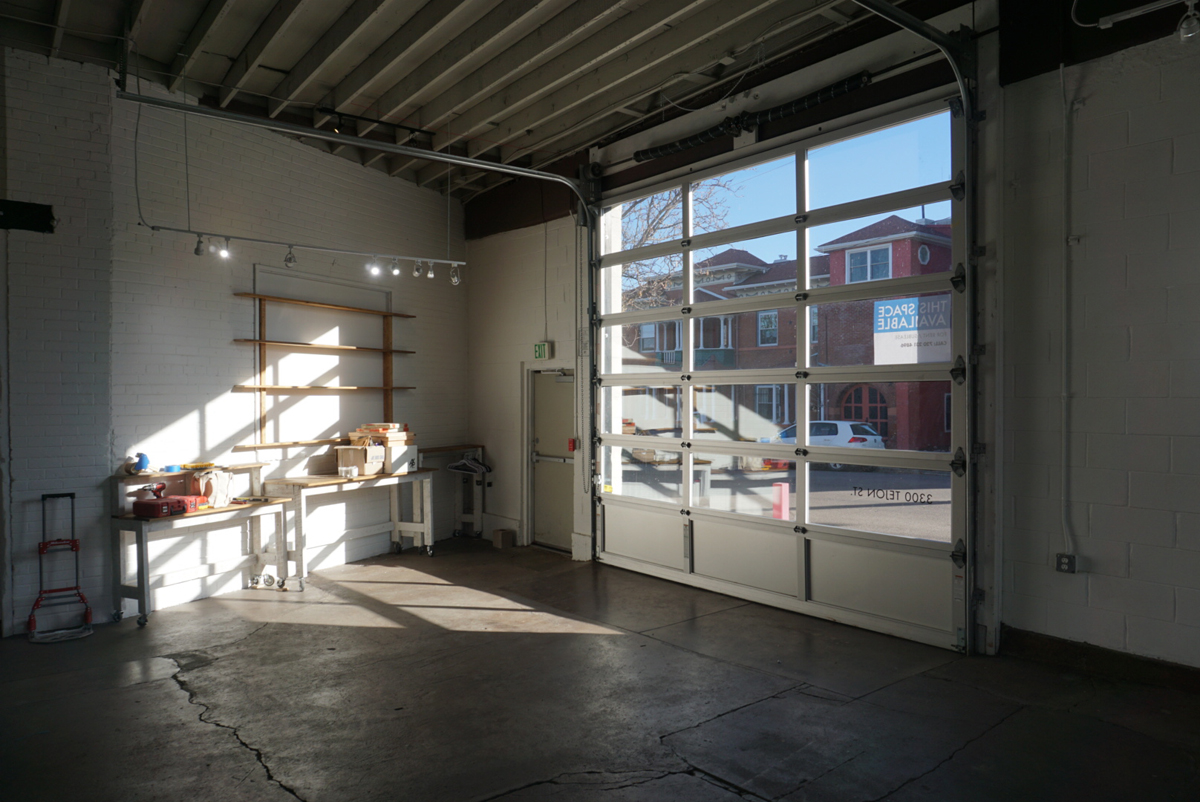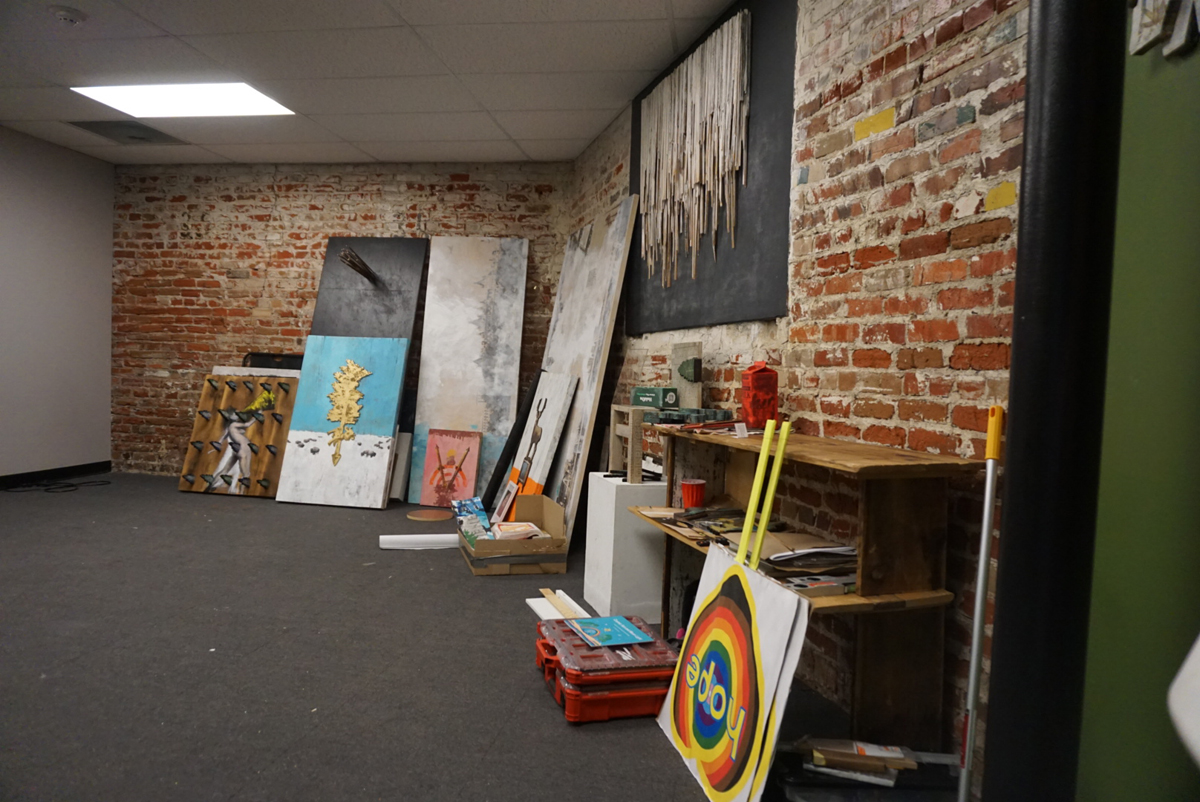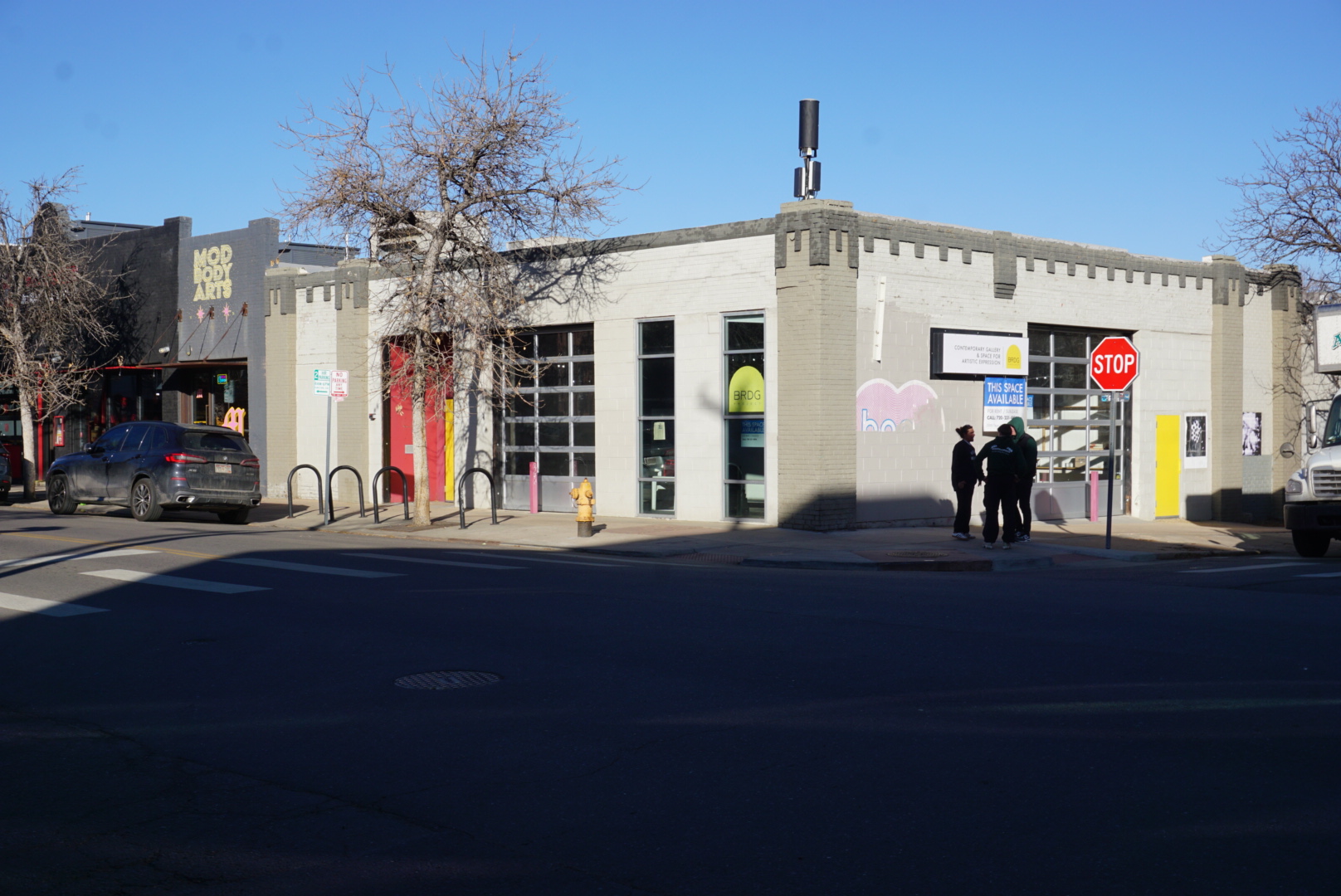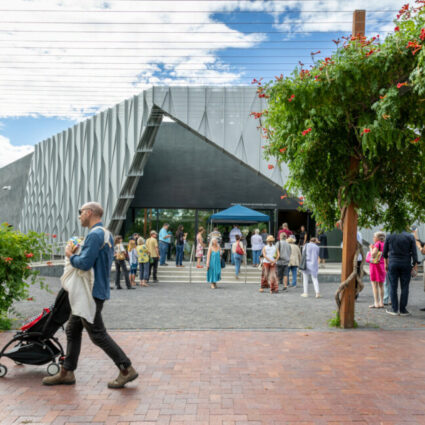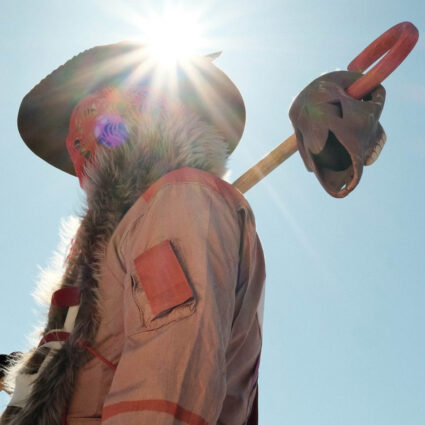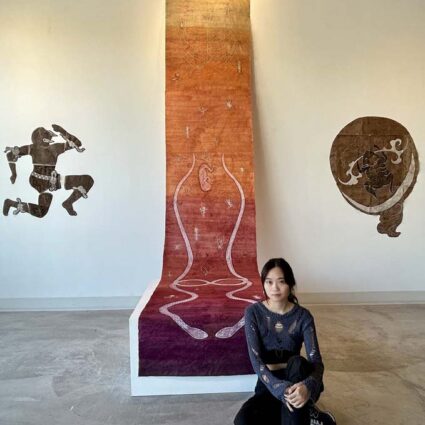“You can’t show art if no one can afford to make it,” says Brett Matarazzo of BRDG Project, an arts nonprofit that just left its second location—with nowhere else to land.
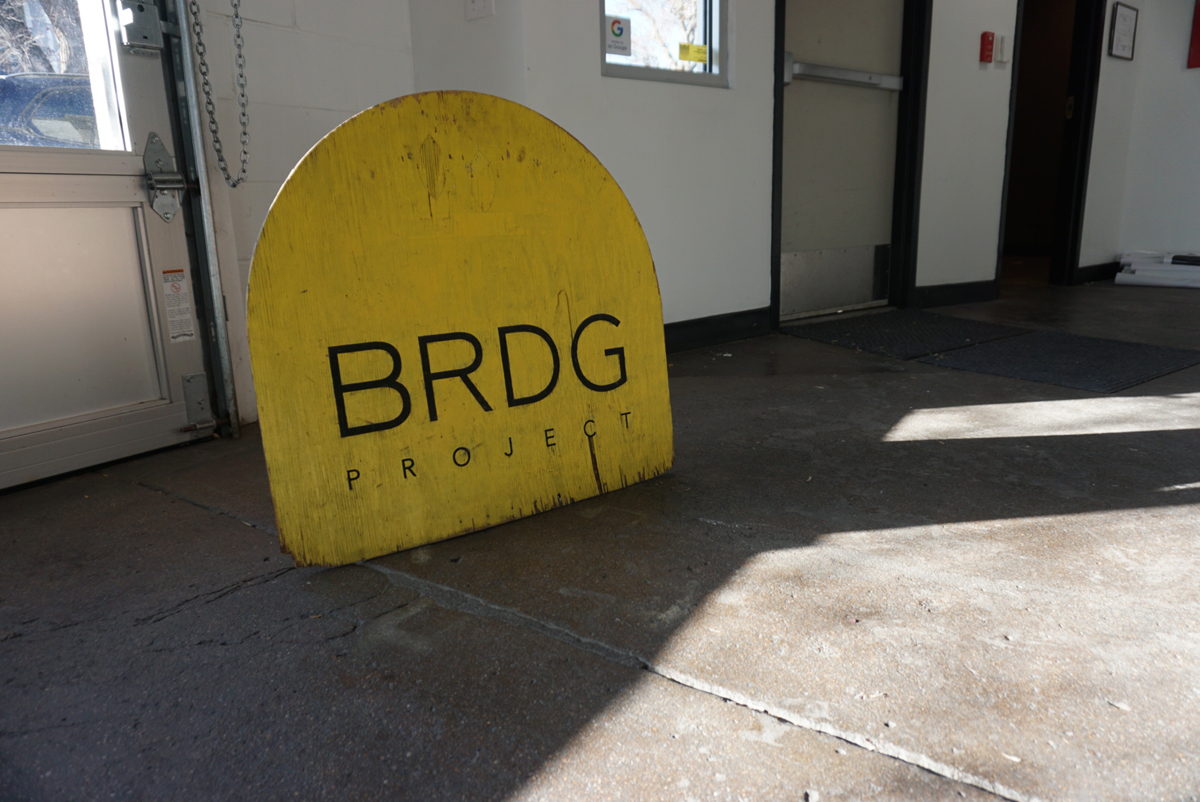
DENVER—Another stage in the life cycle of BRDG Project has concluded after the 501(c)3 arts nonprofit officially closed its current location this February. Led by Brett Matarazzo and co-directors Michael Dowling and Michael Vacchiano, the project has spent nineteen months on the corner of 33rd and Tejon Street in Denver’s historic Lower Highlands neighborhood, building “community through creative expression.” But after a final strategy to pay rent via artist studio spaces fell through in December 2024, the BRDG (pronounced “bridge”) team agreed to close the location’s doors in the new year and regroup.
“I had put a couple of indicators [of success] in place,” says Matarazzo. Among these stipulations were reaching a fundraising goal, sufficiently reducing rent, or signing artists for community studio spaces. None of these goals, however, were reached. “I think there are a hundred reasons why,” Matarazzo admits, citing the economy, the new presidential administration, and a multi-year slowdown in the Denver art market. BRDG’s brick-and-mortar dissolution is part of a larger trend in Denver that sees beloved artist spaces disappearing.
Matarazzo made the final call after months of deliberation over BRDG’s financial futures, which had worsened due to drops in sales and rising rents throughout 2024. The project’s Tejon Street location boasted over 8,000 square feet of galleries, existing studios, a stage, kitchen and bar, retail store, and garage, but cost $12,000 per month in rent, a burden that—without grants or more subleases—was impossible to lift long-term. Despite a sympathetic landlord, BRDG Project needed consistent capital if they were to stay in LoHi.
In October 2024, Matarazzo posted a plea for $40,000 to the project’s Instagram. […] The call went largely unanswered.
BRDG Project first coalesced at the base of Denver’s Highland Bridge in January 2021, before achieving nonprofit status in 2022. Matarazzo acknowledges the precarity of such a move during the COVID-19 pandemic, a difficult time for everyone, especially nonprofits. And contributing artist and curator Tony Ortega agrees, noting that “it was a challenging time to start a project.”
BRDG lived on Platte Street for fourteen months before rents and renovations compelled the team to turn “the first page” in the project’s story and move their gallery to the LoHi neighborhood in July 2023. “I’ve come to not really believe in failure anymore,” says Matarazzo in reference to BRDG’s scrappy past. “It’s really just about learning and that everything is a learning proposition.”
In October 2024, Matarazzo posted a plea for $40,000 to the project’s Instagram and launched a fundraising campaign to support the creation of eleven new studios at BRDG. Spaces would range from $350 to $950 per month and in part replace the performance area and largest gallery towards the back of the building. But the call went largely unanswered.

By November, when a studio tour and open house went unattended, Matarazzo knew that it was time to shutter BRDG’s Tejon Street doors for good. It was “a rather uneventful day,” says Matarazzo. With the exception of a few artists who showed interest in the spaces—like Arlette Lucero, a prominent Denver painter who lives down the street—and a second push for sublets, no one signed a lease.
This is in part likely due to unmet needs of local artists who must balance Denver’s cost of living with average studio rental prices. Matarazzo notes that the few artists he spoke with were in the market for studios at around $1.50 per square foot, instead of the $3.00 to $3.50 BRDG had on offer. “You can’t show art if no one has a place to make it. You can’t show art if no one can afford to make it,” says Matarazzo. “If we can barely house people affordably [in Denver], how the hell are we going to ask them to pay for studios?” he asks.
Closure is not the doorway Matarazzo wanted to step through, but he neither sees it as a failure nor the end of the road as BRDG has weathered uncertainty since its inception. “Most businesses don’t make it a year, most nonprofits even less, and we’ve done something very great with the time that we’ve had and what we’ve built,” says Matarazzo. “BRDG Project will persevere 100%… BRDG as an entity will continue to exist.” He plans to take a much needed break before assessing the project’s mission, rebuilding the board, and generating grant money before deciding on next steps.
What I know now more than ever… [is that] it’s all about finding ways to connect people back together in community.
BRDG Project is yet another shuttered space in LoHi, the former creative nerve center that was the Navajo Street Art District in the 1980s and early 1990s. “It was a hub for co-ops and alternative spaces,” says Ortega, who has seen Denver’s LoHi neighborhood price out business, artist cooperatives, and collectives over the last few decades.
The nonprofit joins numerous other digital or roaming Colorado-based arts platforms that have foregone or ditched physical locations in favor of more spontaneous collaborations, including Denver’s Black Cube and Denver Digerati, and the Center for Fine Art Photography and ArtLab in Fort Collins.
Anyone who knows Brett Matarazzo knows he’s enthusiastic about Colorado’s art scene, a fervency that remains undampened. He welcomes the break from rent-related stressors and looks forward to what BRDG can bring to Denver in the future. “What I know now more than ever… [is that] it’s all about finding ways to connect people back together in community.”


